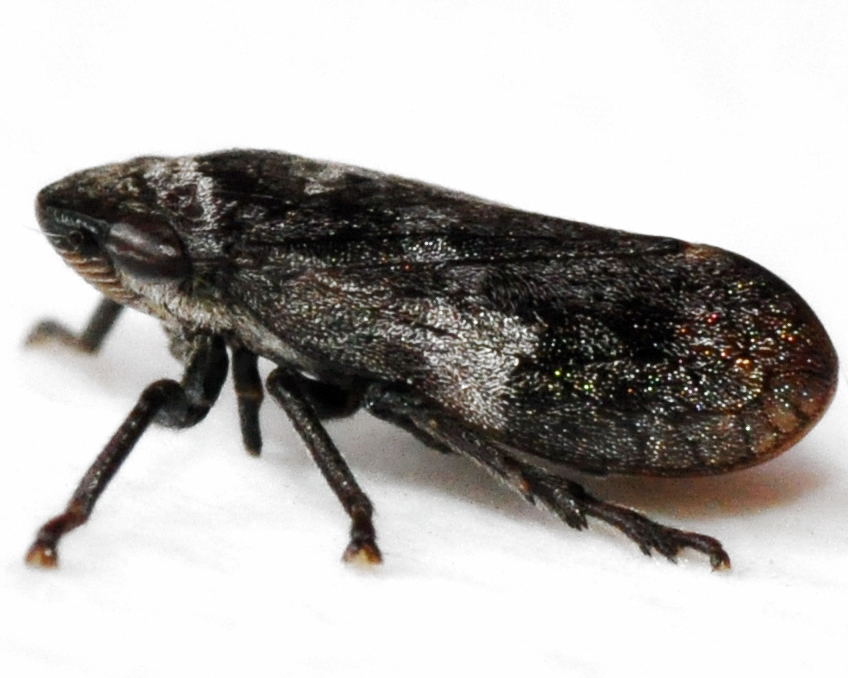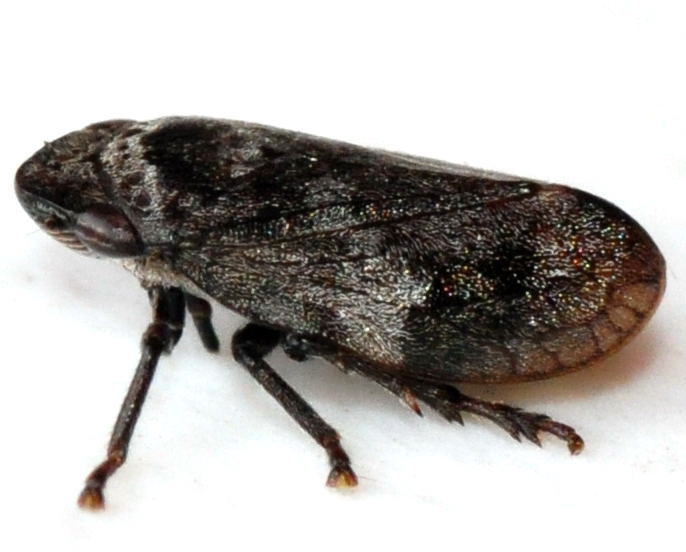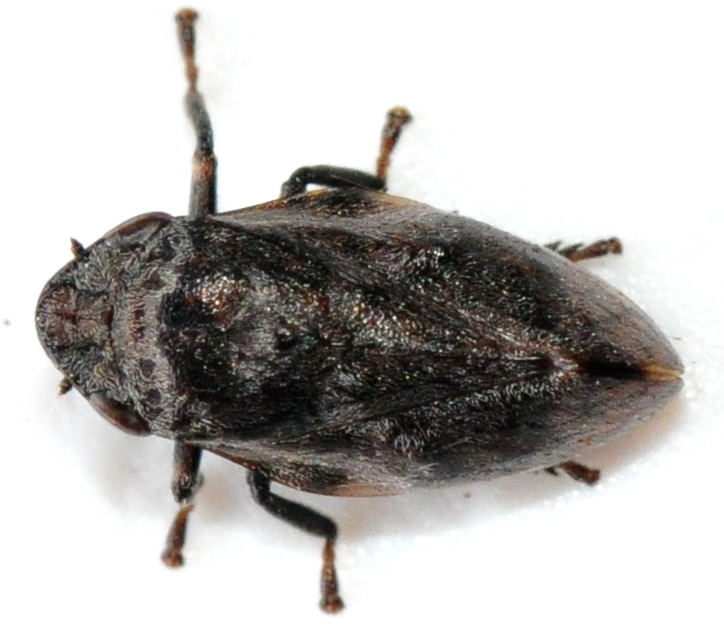
|
|
|
| synonym |
Philaronia abjecta provana |
| description |
This species externally resembles the Meadow Spittlebug (Philaenus spumarius) but does not have the raised wing veins of Philaenus. Unlike Philaenus, in which the wing veins are not distinct, Philaronia have dark, distinct [and noticeable] veins that branch towards the edges of the wings. This is a dark species (as seen in the pics above), with a combination of gray and black on the body. The wings are covered with pale hairs, characteristic of this genus, that stand out against the dark body (see pics above); in Philaenus, the hairs are not as prominent as they are transparent and blend in with the underlying wing color. For a nice comparison between wings of Philaronia vs. Philaenus, showing hairs and veination, click here. The antennal ledge, located above the base of the antennae, is also contrastingly redder than the rest of the face. Females, which have dark faces, are 6.0-6.7 mm in length while males, which have a mostly yellowish face, are 5.4-6.2 mm long. (BG).
This is also the only spittlebug genus with orange nymphs; click here for an image of a Philaronia nymph. |
| distribution |
Found in the eastern U.S., from Ontario south to South Carolina; this is a rare species [and genus] (BG). |
| abundance |
A rare species, P. canadensis has only been recorded from a couple counties. However, it has previously been reported to occur in the state per the literature. |
| seasonal_occurrence | |
| habitat |
Has been recorded recently in a montane meadow with brushy vegetation; there is probably a higher likelihood of finding this species where there is Goldenrod. Additionally, in Ontario this species has been found in river bottoms and along lake shores (BG). |
| plant associates |
Nymphs probably feed on the subterranean parts of herbaceous plants; adults have been found on Goldenrod (Solidago) (Hamilton, 1982) |
| behavior |
|
| comments |
NOTE: There are potentially some unresolved taxonomic issues within this genus that pertain to the validity of P. canadensis (some authors consider it a synonym of P. abjecta). For more on this, see: BG. |
status |
[Native:]
[Introduced:]
[Extirpated:] | | list_type |
[Official:]
[Provisional:] |
| adult_id | Unmistakable and widely known Identifiable from good quality photos of unworn specimens
Identifiable from photos showing undersides, or other specialized views [e.g., legs, face]
Identifiable only by close inspection of structural features or by DNA analysis NULL |
| nymph_id | Unmistakable and widely known Identifiable from good quality photos, especially where associated with known host plants
Identifiable from close inspection of specimens or by DNA analysis
Identifiable only through rearing to adulthood NULL |
| G_rank |
GNR [G3G4] |
| S_rank |
[S3S4] |
| rank_comments |
r - A wide ranging species but generally rare throughout its range; known in NC from only a single, high elevation bald |
| tribe |
Philaenini |
| subgenus |
|
Species Photo Gallery for Philaronia canadensis No Common Name |
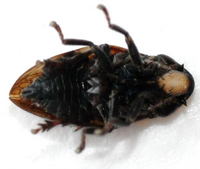 | Photo by: Kyle Kittelberger, Brian Bockhahn, Paul Scharf
Mitchell Co.
Comment: | 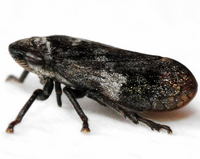 | Photo by: Kyle Kittelberger, Brian Bockhahn, Paul Scharf
Mitchell Co.
Comment: grassy, brushy vegetation in the open on the top of the mountain; the bald. A male |
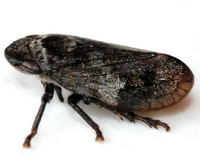 | Photo by: Kyle Kittelberger, Brian Bockhahn, Paul Scharf
Mitchell Co.
Comment: grassy, brushy vegetation in the open on the top of the mountain; the bald. A male |  | Photo by: Kyle Kittelberger, Brian Bockhahn, Paul Scharf
Mitchell Co.
Comment: grassy, brushy vegetation in the open on the top of the mountain; the bald. A male |
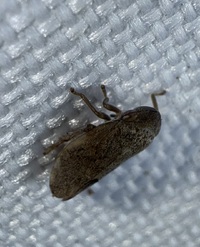 | Photo by: Marilyn Westphal, Nora Murdock
Henderson Co.
Comment: Old field in French Broad River floodplain - using beat sheet |  | Photo by: Marilyn Westphal, Nora Murdock
Henderson Co.
Comment: Old field in French Broad River floodplain - using beat sheet |
|

 »
»